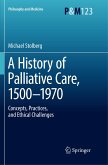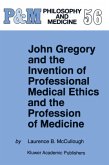This book on the history of palliative care, 1500-1970 traces the historical roots of modern palliative care in Europe to the rise of the hospice movement in the 1960s. The author discusses largely forgotten premodern concepts like cura palliativa and euthanasia medica and describes, how patients and physicians experienced and dealt with terminal illness. He traces the origins of hospitals for incurable and dying patients and follows the long history of ethical debates on issues like truth-telling and the intentional shortening of the dying patients' lives and the controversies they sparked between physicians and patients. An eye opener for anyone interested in the history of ethical decision making regarding terminal care of critically ill patients.
"This English language translation, deriving from the 2011 German edition, has been enhanced and updated. It is organized into two main parts: 'The Early Modern Period (1500-1800)' and 'Modern Times (1800-1970).' ... As a result of its readable, succinct chapters, this text is recommended. The work includes extensive detailed footnotes and a selective bibliography. Summing Up: Recommended. Upper-division undergraduates and above; faculty and professionals." (E. R. Paterson, Choice, Vol. 55 (3), November, 2017)








